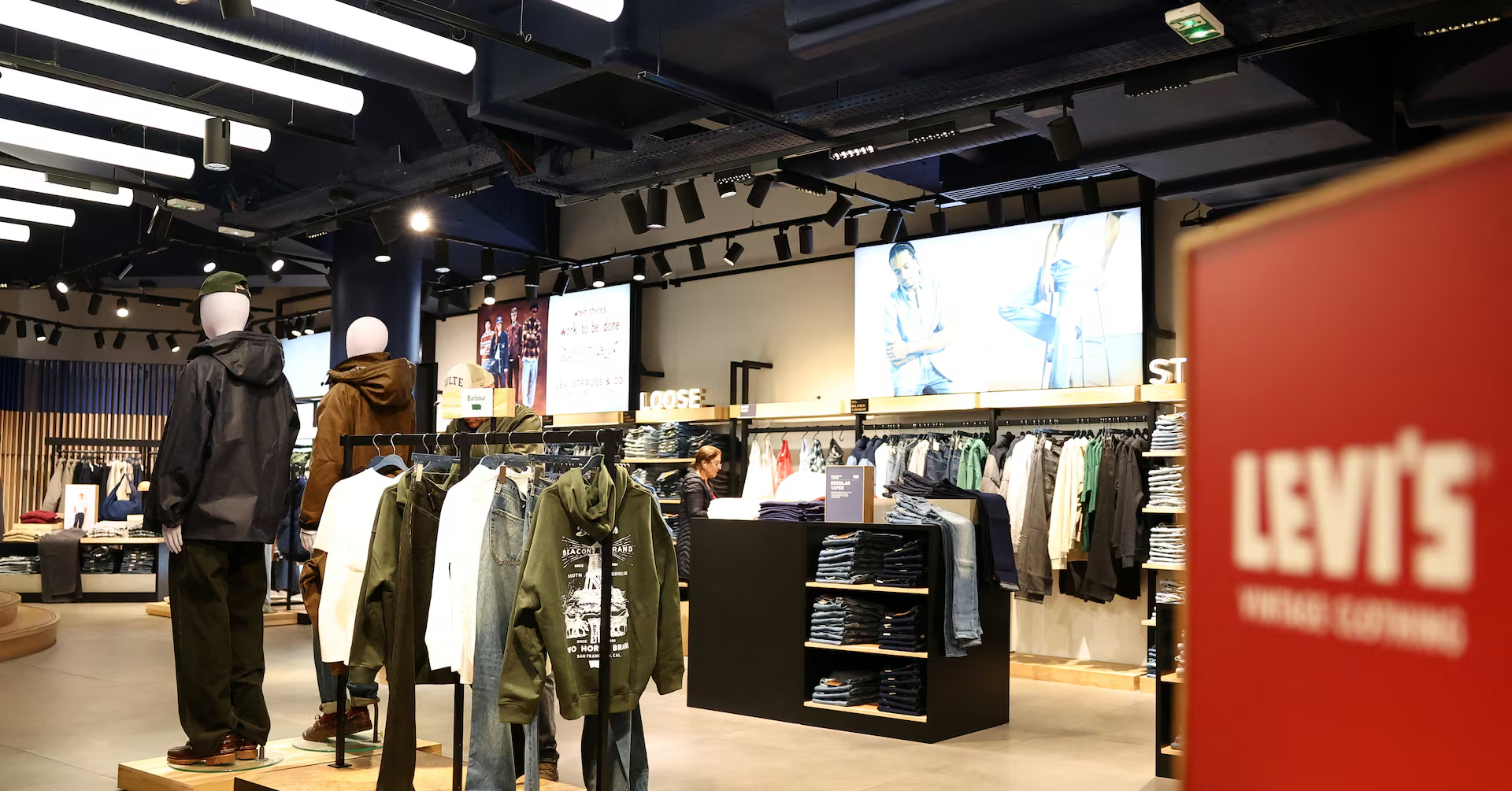Item 1 of 4 Levi’s men clothing are displayed inside a Levi’s store in Paris, France, November 10, 2025. REUTERS/Abdul Saboor
Launched in Asia earlier this year, and in around two dozen stores in Europe and the U.S. since September, the Blue Tab range of higher quality jeans and shirts is part of an ongoing push to broaden the Levi’s brand and attract more women.
Sign up here.
“We’re coming back with a larger scale in ’26, because it’s done really well,” said Singh, dressed in a shirt and jacket from the new line inspired by heavier and stiffer Japanese selvedge denim.
PREMIUM DENIM GROWING FASTER
In Europe, Blue Tab jeans sell for between about 250 and 350 euros ($290-410), compared with between 70 and 130 euros for its Red Tab line. Blue Tab jackets sell for around 700 euros.
Levi’s, which currently sells mostly mid-market denim under its Red Tab range, as well as a mass market range for outlet stores and Walmart, faces a delicate balance to cater to both budget and premium markets.
While premium denim accounts for about 10% of the roughly $100 billion global denim market, it is growing faster than the mid-single-digits of the regular jeans category, Singh said.
“The price point is one thing, but it’s also the quality of the product. So Japanese denim inspired, selvedge,” Singh said in an interview in the group’s Paris showroom.
Selvedge denim is woven on traditional looms that produce self-finished edges and a tightly woven, denser fabric.
Design is also key with a stronger pipeline planned for next year across men’s and women’s ranges, he said.
TARIFFS AND INFLATION CAUSE HEADWINDS
The maker of 501s, which reported sales of $6.4 billion last year, had set a target of reaching $10 billion in revenues and a 15% operating earnings margin by 2027, but scrapped the timeline during the pandemic as high inflation slowed growth.
Levi’s is expecting a strong holiday season, said Singh, with the company currently selling more full-priced product this year compared with a year ago.
“The consumer has largely been resilient. And we’re not seeing any demand contraction,” he said, adding that Levi’s would limit discounts as much as possible.
Expanding into non-denim fabrics that attract new customers and collaborations with brands like Barbour and Nike is helping to sell at full prices, said Singh, while a lower cotton commodity price this year has helped keep down costs.
Later on, Levi’s could buy a new brand to drive faster growth, said Singh, adding to its $150 million Beyond Yoga business, acquired in 2021.
“Right now, we have two brands. We have left the door open for another brand,” said Singh.
While “anything that could accelerate our tops business faster is something we’d look at,” an acquisition is not needed right now, he said.
($1 = 0.8575 euros)
Reporting by Dominique Patton; Editing by Conor Humphries
Our Standards: The Thomson Reuters Trust Principles.
